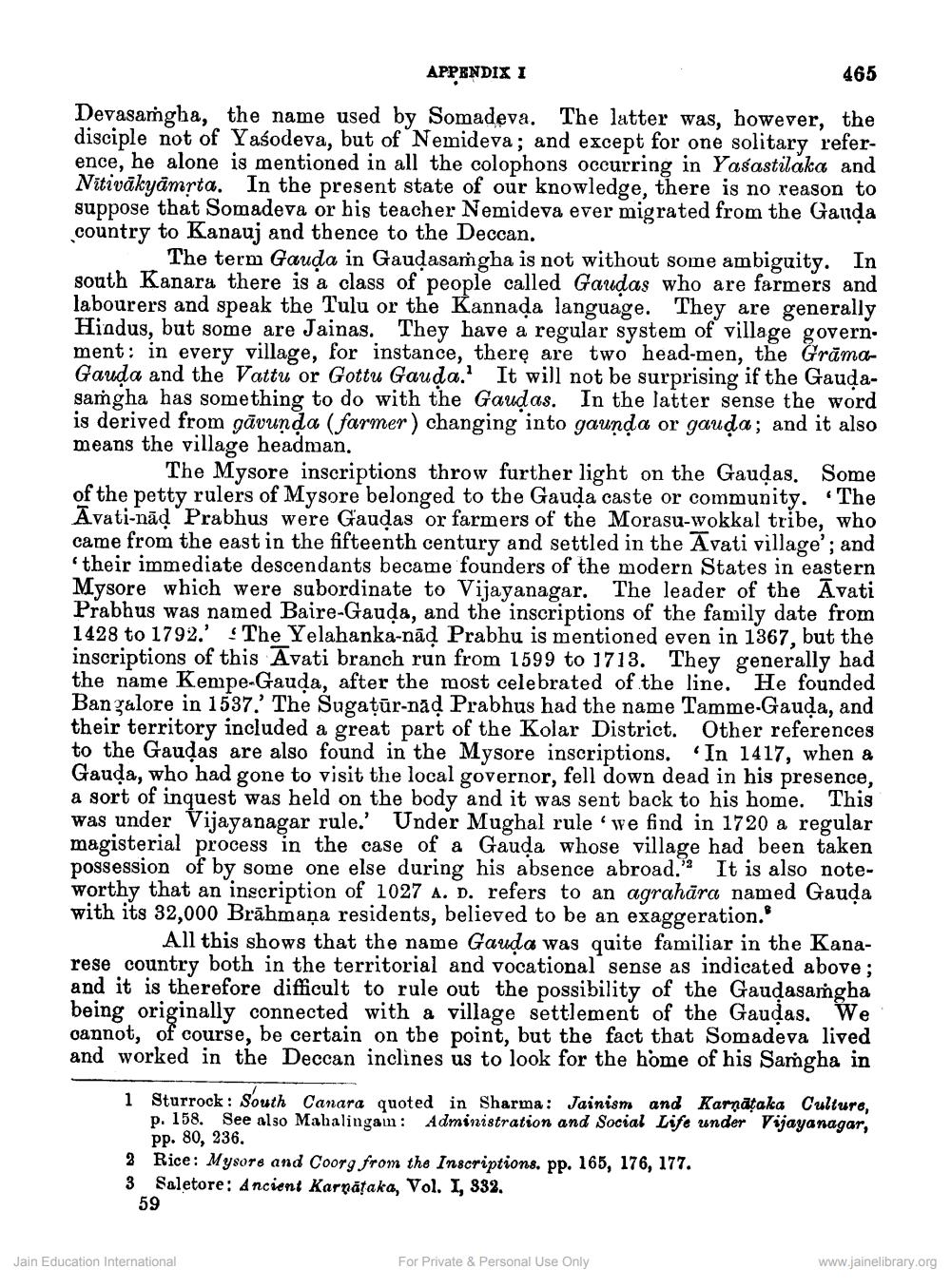________________
APPENDIX I
465
Devasamgha, the name used by Somadeva. The latter was, however, the disciple not of Yaśodeva, but of Nemideva; and except for one solitary reference, he alone is mentioned in all the colophons occurring in Yasastiláka and Nitivākyāmrta. In the present state of our knowledge, there is no reason to suppose that Somadeva or his teacher Nemideva ever migrated from the Ganda country to Kanauj and thence to the Deccan.
The term Gauda in Gaudasamgha is not without some ambiguity. In south Kanara there is a class of people called Gaudas who are farmers and labourers and speak the Tulu or the Kannada language. They are generally Hindus, but some are Jainas. They have a regular system of village govern. ment: in every village, for instance, there are two head-men, the Grāma Gauda and the Vattu or Gottu Gauda. It will not be surprising if the Gaudasamgha has something to do with the Gaudas. In the latter sense the word is derived from gāvunda (farmer changing into gaunda or gauda; and it also means the village headman.
The Mysore inscriptions throw further light on the Gaudas. Some of the petty rulers of Mysore belonged to the Gauda caste or community. The Āvati-nād Prabhus were Gaudas or farmers of the Morasu-wokkal tribe, who came from the east in the fifteenth century and settled in the Avati village'; and
their immediate descendants became founders of the modern States in eastern Mysore which were subordinate to Vijayanagar. The leader of the Avati Prabhus was named Baire-Gauda, and the inscriptions of the family date from 1428 to 1792.' The Yelahanka-nad Prabhu is mentioned even in 1367, but the inscriptions of this Āvati branch run from 1599 to 1713. They generally had the name Kempe-Gauda, after the most celebrated of the line. He founded Bangalore in 1537.' The Sugatūr-nad Prabhus had the name Tamme-Gauda, and their territory included a great part of the Kolar District. Other references to the Gaudas are also found in the Mysore inscriptions. In 1417, when & Gauda, who had gone to visit the local governor, fell down dead in his presence, a sort of inquest was held on the body and it was sent back to his home. This was under Vijayanagar rule. Under Mughal rule we find in 1720 a regular magisterial process in the case of a Gauda whose village had been taken possession of by some one else during his absence abroad. It is also noteworthy that an inscription of 1027 A. D. refers to an agrahāra named Gauda with its 32,000 Brāhmaṇa residents, believed to be an exaggeration.
All this shows that the name Gauda was quite familiar in the Kanarese country both in the territorial and vocational sense as indicated above; and it is therefore difficult to rule out the possibility of the Gaudasamgha being originally connected with a village settlement of the Gaudas. We cannot, of course, be certain on the point, but the fact that Somadeva lived and worked in the Deccan inclines us to look for the home of his Samgha in
1 Sturrock : South Canara quoted in Sharma: Jainism and Karnataka Culture,
p. 158. See also Mahalingain: Administration and Social Life under Vijayanagar,
pp. 80, 236. 2 Rice: Mysore and Coorg from the Inscriptions. pp. 165, 176, 177. 3 Saletore: Ancient Karnataka, Vol. I, 332.
59
Jain Education International
For Private & Personal Use Only
www.jainelibrary.org




